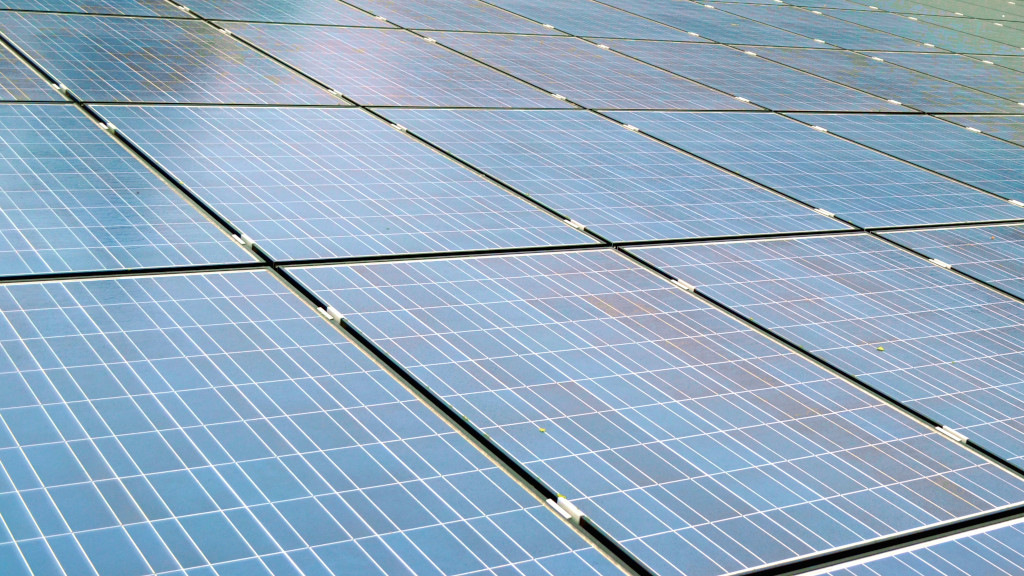British-Australian miner Rio Tinto will use part of its solar power to shut down its Diavik diamond mine. For this the company is building a large solar park adjacent to the mine. Construction of the plant is scheduled to begin in the next few weeks and will take over part of the mine’s electricity supply in the first half of 2024.
At first glance, this is not the best location for a solar system to provide solar power for a diamond mine. Because it is located about 300 kilometers north of Yellowknife in Canada’s Northwest Territories. It is roughly at the same latitude as northern Iceland.
25 percent of the electricity mix is solar
Still, the solar farm will allow Rio Tinto to supply electricity to the mine during mine closure, which is slated to be completed in 2029. Although the solar radiation is low compared to the Earth’s sun belt – the system’s approximately 6,600 modules will generate about 4,200 megawatt hours of solar energy each year. Solar power will replace about one million liters of diesel consumption required for electricity supply. According to Rio Tinto, this saves 2,900 tons of CO2 emissions every year. This amount is comparable to the COR2 emissions of 630 cars.
Use the reflection from the snow
To build solar power scale, Rio Tinto is taking advantage of an advantage the region brings to solar power. Snow is abundant here throughout the year. By installing Rio Tinto bifacial modules, the company can use not only the sun’s rays hitting the top of the module, but also the light reflected from the snow on the back of the module. In addition to this albedo effect, the cold and very cold air masses in the region ensure more solar energy, which achieves higher efficiency at lower temperatures.
To reduce greenhouse gas emissions
The new photovoltaic power plant will further increase the proportion of renewables in the electricity mix at Diavik Mine. The mine is currently powered by a wind-diesel hybrid power plant with a total capacity of 55.4 MW. “I am pleased to be able to significantly increase renewable energy production with the recent installation of a solar power plant at our Diavik diamond mine in Canada’s North,” said Angela Pick, president and CEO of Diamond Mines. “With its wind-diesel hybrid power plant, Diavik is already a beacon of cold climate renewable technologies, and this important project underscores our efforts to further reduce our carbon footprint,” he says. After all, Rio Tinto’s ambitions as a whole are big. The mining group aims to reduce its greenhouse gas emissions by 50 percent by 2030 and to have zero emissions from its mines worldwide by 2050.
Want to stay up-to-date on the energy transition? Subscribe to the free newsletter of ERNEUERBARE ENERGIEN – the largest association-independent magazine for renewable energies in Germany!
Support from Yellowknife
The Diavik project is supported by the Northwest Territories Government with Canadian $3.3 million. This equates to around 2.25 million euros. The money comes in part from a government project in Yellowknife to reduce greenhouse gas emissions. Additionally, $600,000 will come from the Canadian government’s tax credit program for clean energy investments. “The Diavik solar plant is a positive sign of Rio Tinto’s commitment to renewable energy and emissions reduction,” said Northern Province Finance Minister Caroline Wawsonek.
Integrate a solar power plant into the electricity system
He emphasizes the importance of a support program for energy-intensive businesses in the Northwest Territories, which will provide some money for the solar project. This collaboration is an example of our commitment to promoting sustainable development while reducing greenhouse gas emissions in the Northwest Territories, and should be a signal of how our economic growth can continue to make us leaders in these sectors,” said Carolyn Wawsonek.
After the mine closes, Diavik is still working with the Northwest Territories government and community partners to plan how the new solar array and existing wind farms can support the region’s electricity supply. (see below)

“Communicator. Entrepreneur. Introvert. Passionate problem solver. Organizer. Social media ninja.”






More Stories
Eli Tomac competes in the US Nationals
Canada announces squad for 2024 World Cup
UK public sector productivity is deteriorating, ONS data shows